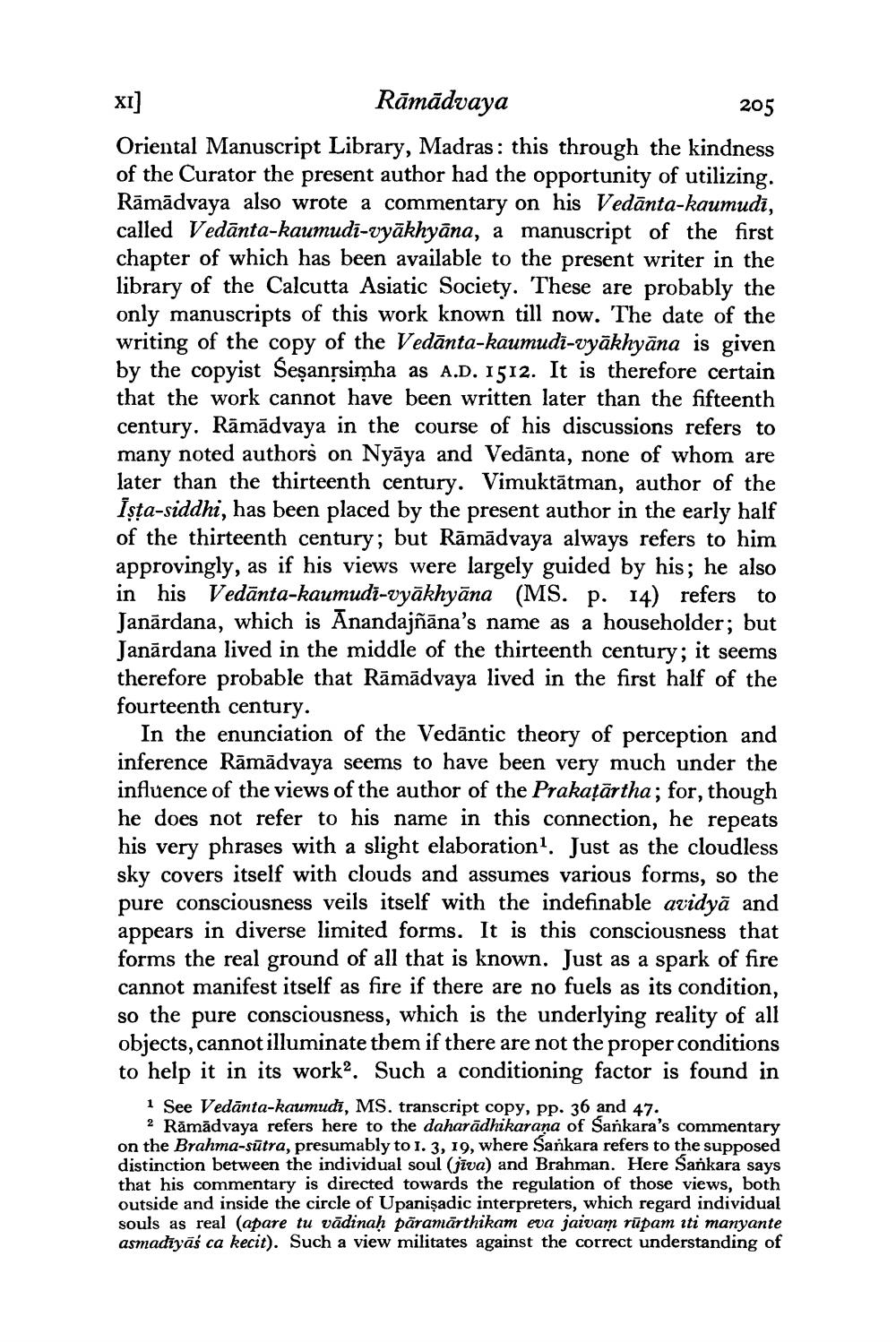________________
XI] Rāmādvaya
205 Oriental Manuscript Library, Madras : this through the kindness of the Curator the present author had the opportunity of utilizing. Rāmādvaya also wrote a commentary on his Vedānta-kaumudi, called Vedānta-kaumudi-vyākhyāna, a manuscript of the first chapter of which has been available to the present writer in the library of the Calcutta Asiatic Society. These are probably the only manuscripts of this work known till now. The date of the writing of the copy of the Vedānta-kaumudi-vyākhyāna is given by the copyist Seșanțsimha as A.D. 1512. It is therefore certain that the work cannot have been written later than the fifteenth century. Rāmādvaya in the course of his discussions refers to many noted authors on Nyāya and Vedānta, none of whom are later than the thirteenth century. Vimuktātman, author of the Īsța-siddhi, has been placed by the present author in the early half of the thirteenth century; but Rāmādvaya always refers to him approvingly, as if his views were largely guided by his; he also in his Vedānta-kaumudi-vyākhyāna (MS. p. 14) refers to Janārdana, which is Anandajñāna's name as a householder; but Janārdana lived in the middle of the thirteenth century; it seems therefore probable that Rāmādvaya lived in the first half of the fourteenth century.
In the enunciation of the Vedāntic theory of perception and inference Rāmādvaya seems to have been very much under the influence of the views of the author of the Prakațārtha; for,
una, Tor, though he does not refer to his name in this connection, he repeats his very phrases with a slight elaboration! Just as the cloudless sky covers itself with clouds and assumes various forms, so the pure consciousness veils itself with the indefinable avidyā and appears in diverse limited forms. It is this consciousness that forms the real ground of all that is known. Just as a spark of fire cannot manifest itself as fire if there are no fuels as its condition, so the pure consciousness, which is the underlying reality of all objects, cannot illuminate them if there are not the proper conditions to help it in its work?. Such a conditioning factor is found in
1 See Vedānta-kaumudi, MS, transcript copy, pp. 36 and 47.
2 Rāmādvaya refers here to the daharādhikaraña of Sankara's commentary on the Brahma-sūtra, presumably to 1.3, 19, where Sankara refers to the supposed distinction between the individual soul (java) and Brahman. Here Sankara says that his commentary is directed towards the regulation of those views, both outside and inside the circle of Upanişadic interpreters, which regard individual souls as real (apare tu vādinaḥ pāramārthikam eva jaivam rūpam iti manyante asmadīyāś ca kecit). Such a view militates against the correct understanding of




